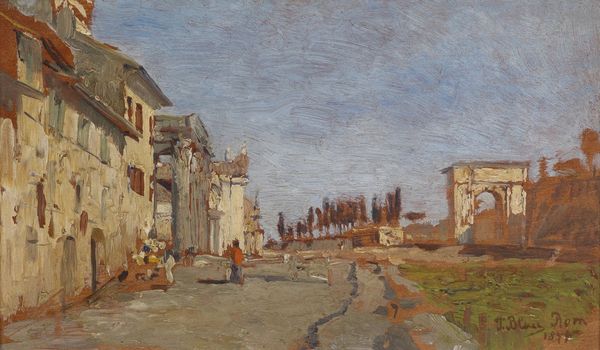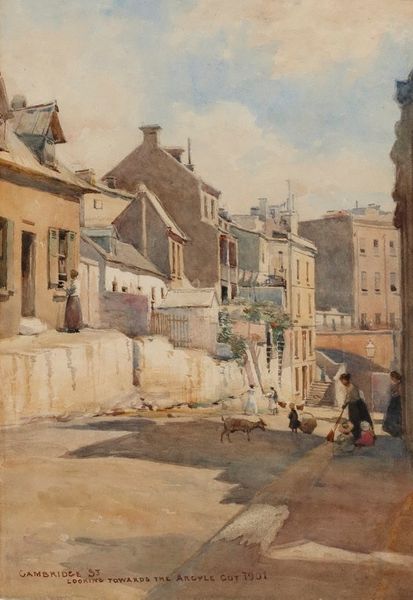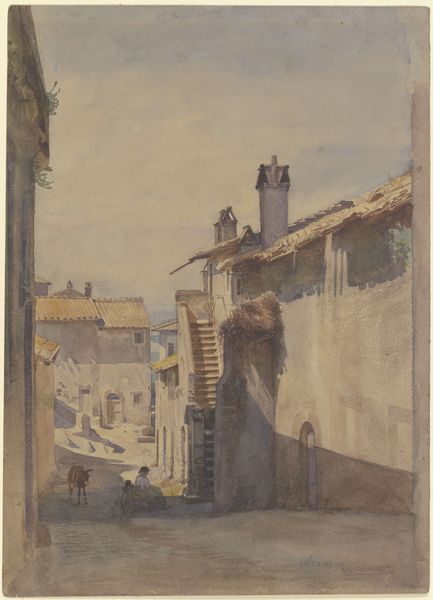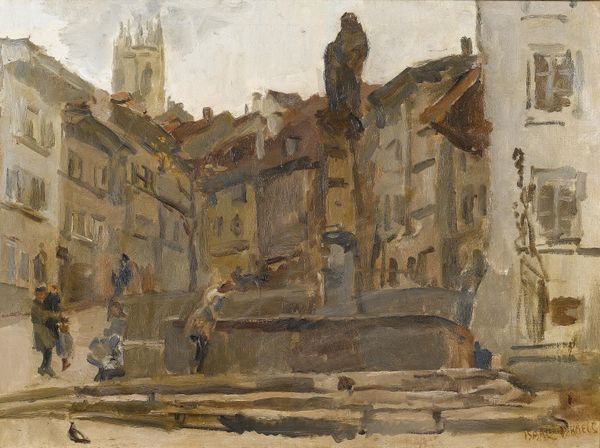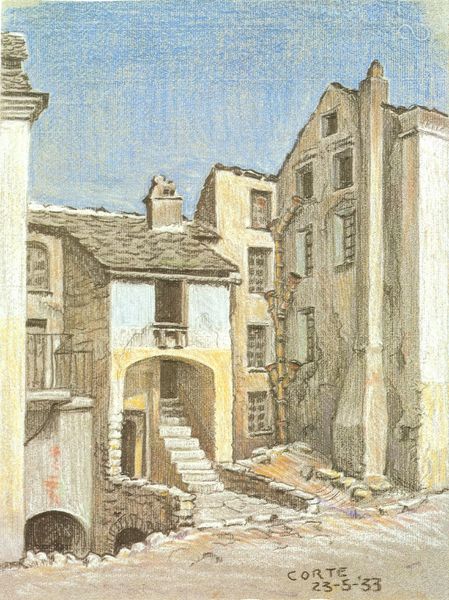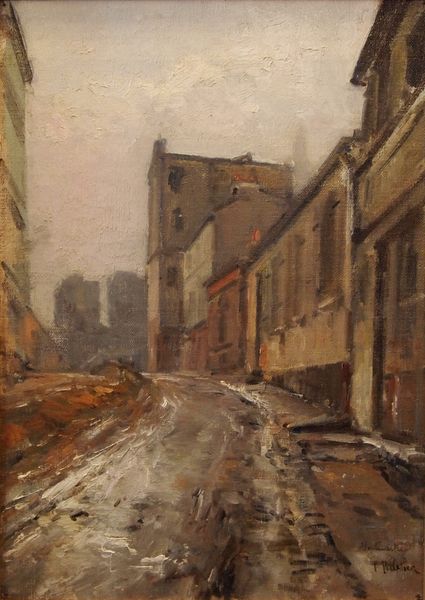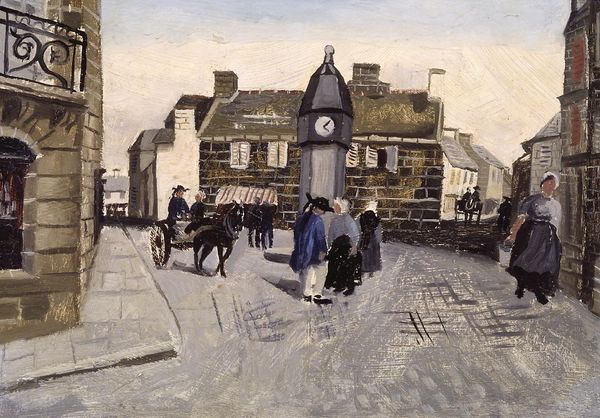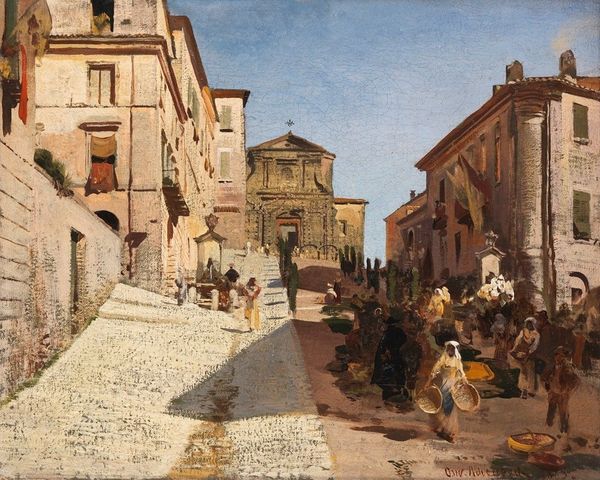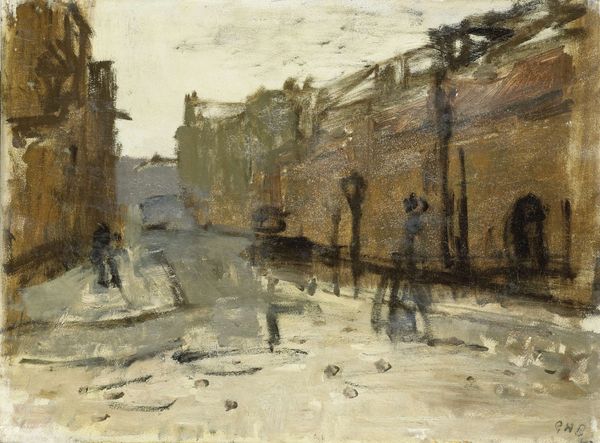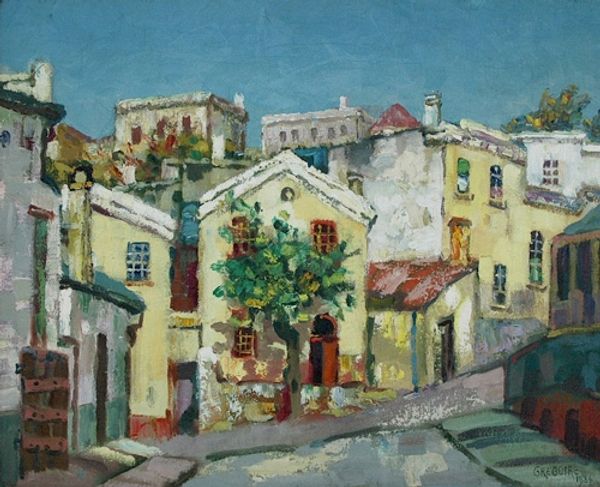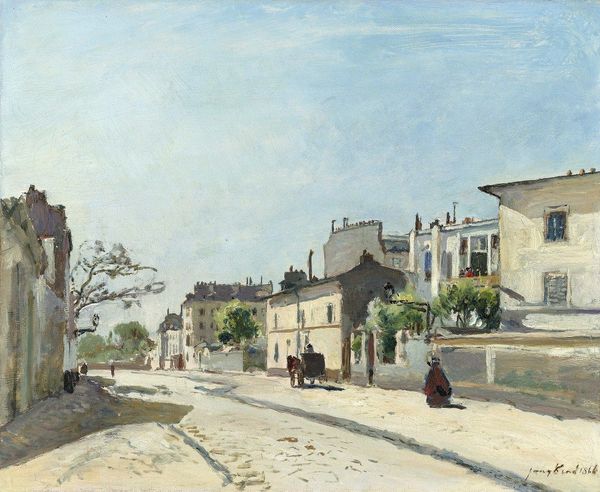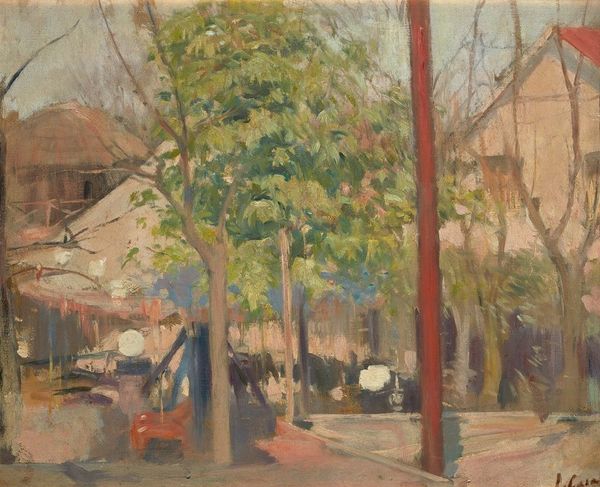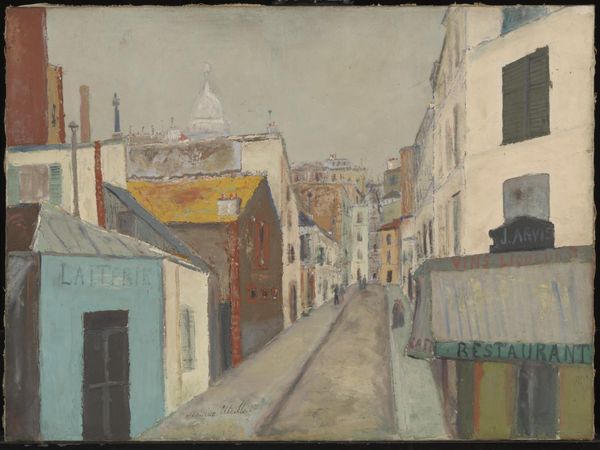
watercolor
#
landscape
#
watercolor
#
cityscape
#
post-impressionism
Dimensions: 33 x 42.5 cm
Copyright: Public domain
Editor: This is Ferdinand Hodler's "Samoëns," a watercolor from 1882. I'm immediately drawn to the contrast between the muted, earthy tones and the stark architectural lines. It feels both peaceful and slightly melancholic. What catches your eye in this piece? Curator: The formal elements dictate the emotional reading. Hodler's deliberate use of orthogonal lines, for instance, in the buildings and road, creates a structured, almost rigid composition. Do you observe how the artist subtly disrupts this rigidity through the soft diffusion of watercolor, rendering a contrasting sense of atmosphere and spontaneity? Editor: I see that now! The buildings have these hard, defined edges, but the watercolor gives everything a slightly blurred look. Does that tension play into the overall meaning? Curator: Precisely. It's not just about the representation of Samoëns, but the formal tension between line and wash. The earthy palette furthers this –notice how browns, greys, and muted greens lack chromatic intensity. That in itself signifies how material structures balance— or struggle—against ephemeral atmosphere. Editor: That's a really interesting way to see it. I was focused on the subject matter, but looking at the composition itself changes my understanding. It becomes less about the place and more about the interplay of artistic techniques. Curator: Exactly. Form precedes content in many ways. Considering Hodler’s exploration of parallelism and compositional structure throughout his oeuvre, we could consider this watercolor as foundational for the artist. This emphasis reveals more than meets the eye, don’t you think? Editor: I think I will look at landscapes quite differently now!
Comments
No comments
Be the first to comment and join the conversation on the ultimate creative platform.
